A Brief History of Sheridan, New York
Before 1600: Native peoples
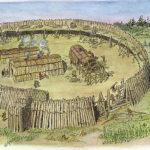
Early Iroquoian residents of Sheridan left two circular earth-works and many artifacts behind. The largest of the earthworks, dubbed the “Sheridan Ring,” was located south of Sheridan Center and enclosed about 13 acres.
1802: Paine’s Road
 In 1802, men working under General Paine for the state of Connecticut cleared a rough wagon road along the low gravel ridge that U.S. Route 20 follows through Sheridan today. First traversed by Native Americans in prehistoric times, the route marked the way to Connecticut’s “Western Reserve” in present-day Ohio. Many travelers would use the path in years to come.
In 1802, men working under General Paine for the state of Connecticut cleared a rough wagon road along the low gravel ridge that U.S. Route 20 follows through Sheridan today. First traversed by Native Americans in prehistoric times, the route marked the way to Connecticut’s “Western Reserve” in present-day Ohio. Many travelers would use the path in years to come.
1804: 1st Land Purchases
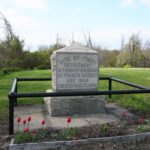 When Francis Webber first came to the area to hunt in 1803, Sheridan did not yet exist on the map. In 1804, he and two relatives made the first land purchases in future Sheridan along the eastern end of the current Main Road.
When Francis Webber first came to the area to hunt in 1803, Sheridan did not yet exist on the map. In 1804, he and two relatives made the first land purchases in future Sheridan along the eastern end of the current Main Road.
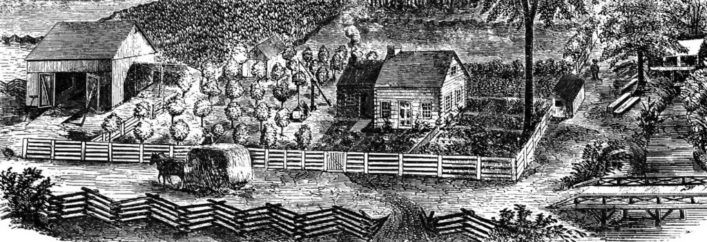
1806: 1st Post Office
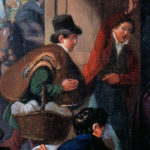
The first post office in present-day Sheridan – and only the second post office in the county – opened at the Orsamus Holmes tavern near the present intersection of New Road and Route 20. The tavern also served as the first polling place in this part of the county.
1807: Rev. John Spencer Arrives
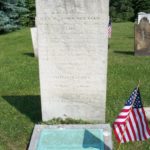
Rev. Spencer was the first preacher to minister to the WNY frontier. He was sent by the Missionary Society of Connecticut in 1807 and settled on the Main Road with his family. Sheridan was his home base in between his extensive travels.
1811: 1st Grist Mill
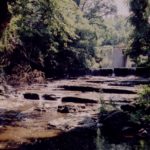 Haven Brigham is credited with erecting the first and only grist mill in town at a site on Beaver Creek. He also constructed a tannery and helped his younger brother, Winsor, build a saw mill nearby.
Haven Brigham is credited with erecting the first and only grist mill in town at a site on Beaver Creek. He also constructed a tannery and helped his younger brother, Winsor, build a saw mill nearby.
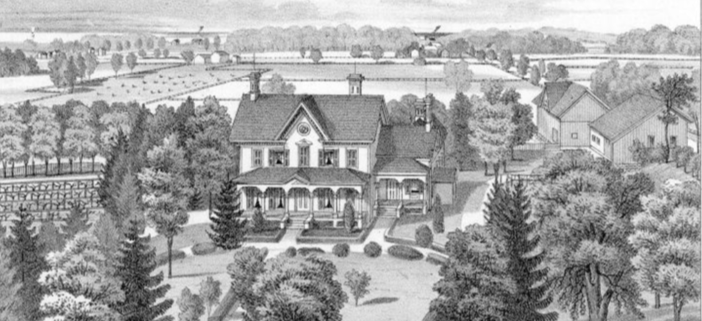
1815: schooner ‘Kingbird’ Launched

Most towns on the lakeshore had locally built ships that transported lumber, grain and other cargo. With a little capital and a good supply of lumber, a man could build a modest vessel. In 1815, Haven Brigham and ship Capt. Zephaniah Perkins built a 40-ton schooner at the mouth of Beaver Creek in Sheridan and named it the Kingbird. Perkins was the first of a long line of lake captains to hail from Sheridan.
1827: Town of Sheridan created

Leading Sheridians Nathaniel Gray, John E. Griswold, and Haven Brigham journeyed to Albany in the winter of 1827 to lobby for the town’s incorporation. They got their wish. In April, an act of the state legislature officially set off Sheridan from the adjacent townships of Pomfret and Hanover. Gray chose the name in honor of his favorite poet-playwright, Richard Brinsley Sheridan.
1850s: Underground Railroad
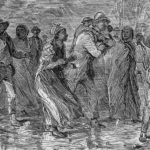
Geography and moral courage combined to make Sheridan a stop for freedom seeking slaves in the years before the Civil War. In an interview he gave to the Fredonia Censor in 1871, Allen Denny of the Main Road confirmed his family was decidedly anti-slavery. Other evidence suggests the Dennys were not alone among their neighbors.
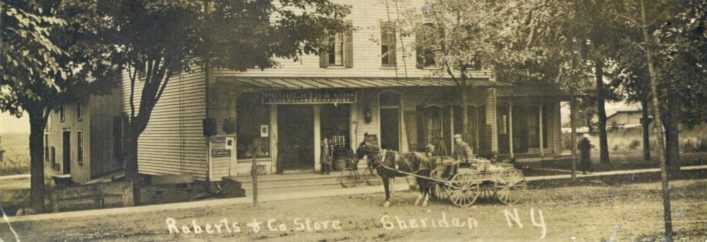
1851: Erie Railroad Completed
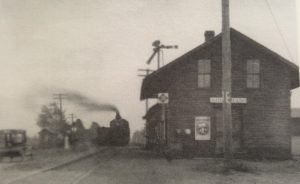
Sheridan was on the route of the New York and Erie Railroad when it opened in 1851, then the longest trunk line in the world. The photograph above was taken about 1910 and shows a train arriving at the Sheridan depot.
Late 1800s: Grape Farming Expands
Local farmers began experimenting with viniculture in the mid-1800s. The gravel loam soil proved ideal and Lake Erie had a moderating effect on the climate. By the late 1800s, the coming of the railroad made grape farming more profitable. Local grapes were now being sold in Chicago and points westward.
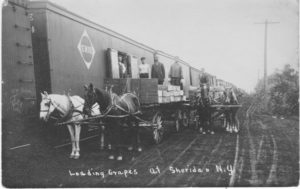
1909: Eagle Bay Farm Established
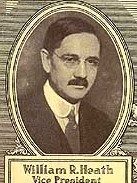 The scenic cove known as Eagle Bay has inspired many visionary efforts, from a model dairy farm founded by Larkin Company associate William R. Heath in 1909 to a beachfront retreat of the North American Motor Club in the early 1920s. Today it is home to St. Columban’s on the Lake Retirement Home, which takes its name from a Catholic group of missionaries who purchased the property in 1924.
The scenic cove known as Eagle Bay has inspired many visionary efforts, from a model dairy farm founded by Larkin Company associate William R. Heath in 1909 to a beachfront retreat of the North American Motor Club in the early 1920s. Today it is home to St. Columban’s on the Lake Retirement Home, which takes its name from a Catholic group of missionaries who purchased the property in 1924.
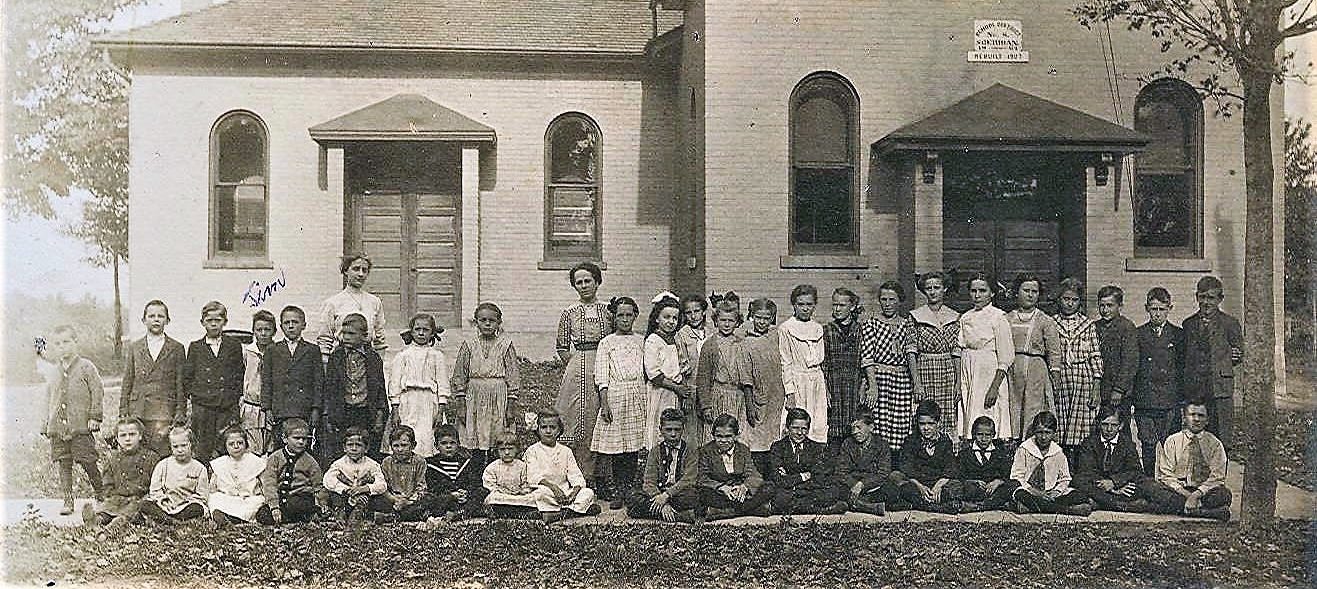
1918: Rep. Daniel Reed Elected to Congress
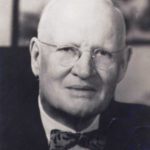 Sheridan’s Daniel A. Reed was elected to serve 21 consecutive terms in the U.S. Congress, beginning in 1918. He represented the 43rd Congressional District which then consisted of Chautauqua, Cattaraugus, and Allegany counties. The Reed family has a long history in Sheridan, with several of Rep. Reed’s forebears piloting ships on Lake Erie.
Sheridan’s Daniel A. Reed was elected to serve 21 consecutive terms in the U.S. Congress, beginning in 1918. He represented the 43rd Congressional District which then consisted of Chautauqua, Cattaraugus, and Allegany counties. The Reed family has a long history in Sheridan, with several of Rep. Reed’s forebears piloting ships on Lake Erie.
1927: IOOF Hall Built

The Independent Order of the Odd Fellows was once a popular fraternal organization with chapters across the U.S. Members of the Sheridan IOOF pooled their dollars and labor to build a hall at the center of town in 1927. A winter storm nearly derailed the construction, but the men persevered. By late July they boasted “one of the finest lodges” in the country. The hall is now the Sheridan Historical Center.
1942: Dunkirk Airport opens
When Dunkirk officials secured public funds to construct an airport during World War II, they looked to Sheridan to supply the location. Work began in 1942 and proceeded at a feverish pace. It was thought the Army would be using the facility for wartime training or protection of the Niagara Falls defense area.

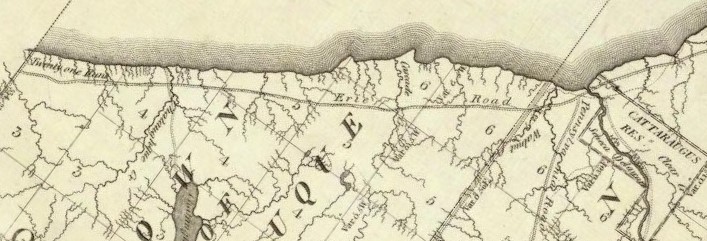
Before 1600: Native peoples

Early Iroquoian residents of Sheridan left two circular earth-works and many artifacts behind. The largest of the earthworks, dubbed the “Sheridan Ring,” was located south of Sheridan Center and enclosed about 13 acres.
1802: Paine’s Road
 In 1802, men working under General Paine for the state of Connecticut cleared a rough wagon road along the low gravel ridge that U.S. Route 20 follows through Sheridan today. First traversed by Native Americans in prehistoric times, the route marked the way to Connecticut’s “Western Reserve” in present-day Ohio. Many travelers would use the path in years to come.
In 1802, men working under General Paine for the state of Connecticut cleared a rough wagon road along the low gravel ridge that U.S. Route 20 follows through Sheridan today. First traversed by Native Americans in prehistoric times, the route marked the way to Connecticut’s “Western Reserve” in present-day Ohio. Many travelers would use the path in years to come.
1804: Land Purchases
 When Francis Webber first came to the area to hunt in 1803, Sheridan did not yet exist on the map. In 1804, he and two relatives made the first land purchases in future Sheridan along the eastern end of the current Main Road.
When Francis Webber first came to the area to hunt in 1803, Sheridan did not yet exist on the map. In 1804, he and two relatives made the first land purchases in future Sheridan along the eastern end of the current Main Road.

1806: 1st Post Office

The first post office in present-day Sheridan – and only the second post office in the county – opened at the Orsamus Holmes tavern near the present intersection of New Road and Route 20. The tavern also served as the first polling place in this part of the county.
1807: Rev. John Spencer Arrives

Rev. Spencer was the first preacher to minister to the WNY frontier. He was sent by the Missionary Society of Connecticut in 1807 and settled on the Main Road with his family. Sheridan was his home base in between his extensive travels.
1811: 1st Grist Mill
 Haven Brigham is credited with establishing the first and only grist mill in town at a site on Beaver Creek. He also constructed a tannery and helped his younger brother, Winsor, build a saw mill nearby.
Haven Brigham is credited with establishing the first and only grist mill in town at a site on Beaver Creek. He also constructed a tannery and helped his younger brother, Winsor, build a saw mill nearby.
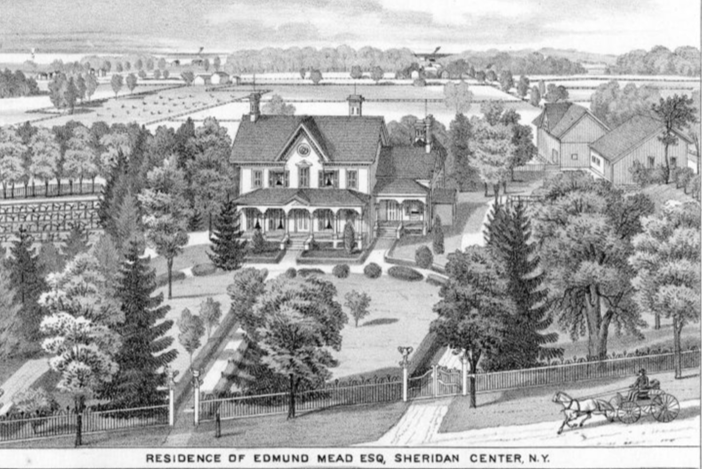
1815: schooner ‘Kingbird’ Launched

Most harbor towns on the lakeshore had locally-built ships that transported lumber, grain and other cargo. With a little capital and a good supply of lumber, a man could build a modest vessel. In 1815, Haven Brigham and ship Capt. Zephaniah Perkins built a 40-ton schooner at the mouth of Beaver Creek in Sheridan and named it the Kingbird. Perkins was the first of a long line of lake captains to hail from Sheridan.
1827: incorporation of town of Sheridan

Leading Sheridians Nathaniel Gray, John E. Griswold, and Haven Brigham journeyed to Albany in the winter of 1827 to lobby for the town’s incorporation. They got their wish. In April, an act of the state legislature officially set off Sheridan from the adjacent townships of Pomfret and Hanover. Gray chose the name in honor of his favorite poet-playwright, Richard Brinsley Sheridan.
1850s: Underground Railroad operates
A confluence of geography and bold resolve made Sheridan a stop on the UGRR in the years before the Civil War. In an interview he gave to the Fredonia Censor in 1871, Allen Denny of the Main Road confirmed his family was decidedly anti-slavery. Other evidence suggests they were not alone among their neighbors.


1851: Erie Railroad Completed

Sheridan was on the route of the New York and Erie Railroad when it opened in 1851, then the longest trunk line in the world. The photograph above was taken about 1910 and shows a train arriving at the Sheridan depot.
Late 1800s: Grape Farming Expands
Local farmers began experimenting with viniculture in the mid-1800s. The gravel loam soil proved ideal and Lake Erie had a moderating effect on the climate. By the late 1800s, the coming of the railroad made grape farming more profitable. Local grapes were now being sold in Chicago and points westward.

1909: Eagle Bay Farm Established
 The picturesque cove known as Eagle Bay has inspired a series of progressive endeavors, from a model dairy farm established by Larkin Company associate William R. Heath in 1909 to a beachfront recreational retreat marketed by the North American Motor Club in the early 1920s. Today it is home to St. Columban’s on the Lake Retirement Home, which takes its name from a Catholic group of missionaries who took ownership of the lakefront property in 1924.
The picturesque cove known as Eagle Bay has inspired a series of progressive endeavors, from a model dairy farm established by Larkin Company associate William R. Heath in 1909 to a beachfront recreational retreat marketed by the North American Motor Club in the early 1920s. Today it is home to St. Columban’s on the Lake Retirement Home, which takes its name from a Catholic group of missionaries who took ownership of the lakefront property in 1924.

1918: Rep. Daniel Reed Elected to Congress
 Sheridan’s Daniel A. Reed was elected to serve 21 consecutive terms in the U.S. Congress, beginning in 1918. He represented the 43rd Congressional District which then consisted of Chautauqua, Cattaraugus, and Allegany counties.
Sheridan’s Daniel A. Reed was elected to serve 21 consecutive terms in the U.S. Congress, beginning in 1918. He represented the 43rd Congressional District which then consisted of Chautauqua, Cattaraugus, and Allegany counties.
1942: Airport opens
When Dunkirk officials secured public funds to construct an airport during World War II, they looked to Sheridan to supply the location. Work began in 1942 and proceeded at a feverish pace. It was thought the Army would be using the facility for wartime training or protection of the Niagara Falls defense area.
